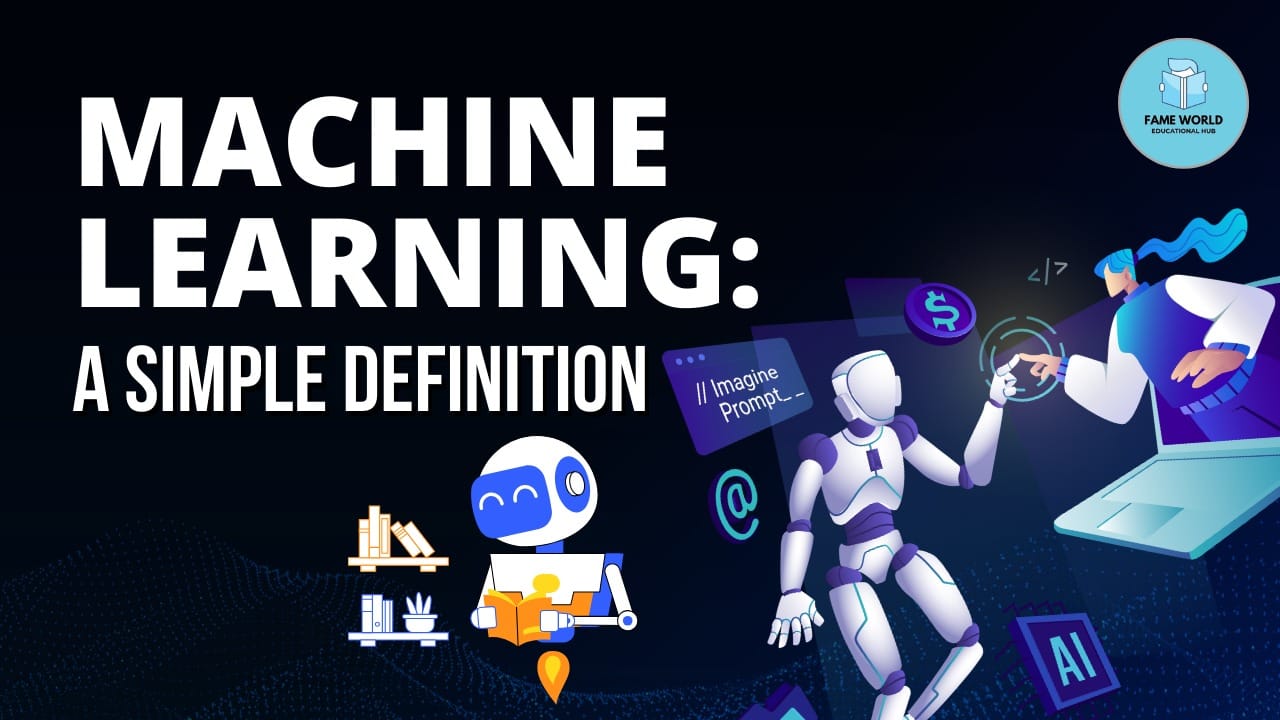Machine learning is a branch of artificial intelligence (AI) that enables computers to learn and make decisions without being explicitly programmed. Imagine you have a machine that can improve its performance with experience, just like humans do. This is the essence of machine learning.
In this blog, we’ll break down the basic concepts of machine learning, making it easy to understand for beginners.
What is Machine Learning?
At its core, machine learning (ML) is about teaching machines to recognize patterns in data. Instead of being told what to do at every step, machines analyze vast amounts of information and make decisions based on that data. This learning process mimics the way humans gather knowledge from experiences.
For example, when a child learns to differentiate between a cat and a dog, they do so by observing various features such as size, shape, and behavior. Similarly, machine learning models analyze patterns in the data and learn to identify objects, predict outcomes, or classify information.
Types of Machine Learning
There are three main types of machine learning:
1. Supervised Learning
In supervised learning, the machine is trained on a labeled dataset, which means the input comes with the correct output. Think of it as a teacher guiding a student by providing answers to problems and then letting the student solve similar problems.
Example: A model trained to recognize spam emails by analyzing thousands of labeled emails as either “spam” or “not spam.”
2. Unsupervised Learning
In unsupervised learning, the machine is given data without labeled outputs. The system must find hidden patterns and relationships within the data. It’s like giving someone a jigsaw puzzle without the final picture and asking them to figure it out.
Example: A model used for customer segmentation, grouping similar customers based on their shopping behavior without knowing predefined categories.
3. Reinforcement Learning
Here, machines learn by interacting with their environment and receiving feedback in the form of rewards or penalties. Over time, they learn to maximize positive outcomes. It’s like training a dog: when it does the correct trick, it gets a treat; when it disobeys, it doesn’t.
Example: Teaching a robot to navigate through a maze by rewarding it when it moves in the right direction.
How Does Machine Learning Work?
The process of machine learning typically involves the following steps:
1. Data Collection: Collecting relevant data is the first step. This data could come from sensors, websites, or user interactions.
2. Data Preparation: Once you have the data, it needs to be cleaned and formatted. This means removing errors or irrelevant information.
3. Choosing a Model: Different machine learning tasks require different algorithms. Some popular algorithms include decision trees, neural networks, and support vector machines.
4. Training the Model: The machine is trained using a portion of the data (called the training set). The model learns by identifying patterns and relationships.
5. Testing the Model: After training, the model is tested with a new set of data to evaluate its performance.
6. Deployment: Once the model performs well on test data, it’s ready to be deployed in real-world applications.
Real-Life Applications of Machine Learning
Machine learning isn’t just for tech companies; it’s everywhere. Here are a few everyday examples:
– Personalized Recommendations: Streaming services like Netflix and Spotify use machine learning to recommend movies and songs based on your past behavior.
– Voice Assistants: Virtual assistants like Siri, Alexa, and Google Assistant learn from user commands and conversations to improve their responses.
– Self-Driving Cars: Autonomous vehicles rely on machine learning algorithms to make decisions like braking, steering, and navigating roads.
– Fraud Detection: Banks use machine learning to detect unusual transaction patterns that may indicate fraud.
– Medical Diagnostics: Machine learning helps doctors diagnose diseases by analyzing medical images and patient data more efficiently.
Why Is Machine Learning Important?
Machine learning has revolutionized industries by automating tasks, making predictions, and discovering patterns that humans might miss. It enables companies to make data-driven decisions, optimize operations, and improve customer experiences.
Some of the key benefits include:
– Efficiency: ML models can process vast amounts of data quickly and make accurate decisions.
– Cost Reduction: Automating repetitive tasks can reduce the need for human labor, lowering costs.
– Better Predictions: ML models can identify trends in data, providing businesses with valuable insights for future planning.
Getting Started with Machine Learning
Interested in exploring machine learning further? Here are a few steps to get started:
1. Learn Python: Python is the most popular programming language for machine learning. It’s beginner-friendly and has extensive libraries like `scikit-learn`, `TensorFlow`, and `PyTorch` that make building models easier.
2. Explore Datasets: Start experimenting with datasets from platforms like Kaggle or UCI Machine Learning Repository.
3. Try Simple Projects: Begin with simple projects like predicting house prices or building a basic recommendation system.
4. Learn the Math: Understanding concepts like linear algebra, probability, and calculus will help you grasp the inner workings of ML algorithms.
Conclusion
Machine learning is transforming the world, making everyday tasks easier, smarter, and more efficient. From personal recommendations to self-driving cars, its applications are limitless. Whether you’re a tech enthusiast or just curious about how machines can “learn,” this field holds exciting possibilities.
Ready to dive into machine learning? Stay curious, explore, and you might just build the next revolutionary ML application!



